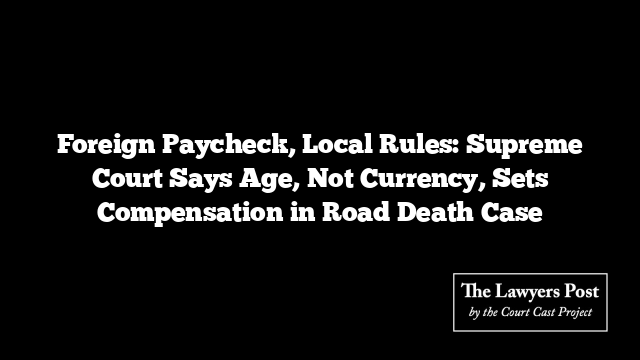In a ruling that could reshape how courts assess compensation in motor accident cases involving overseas incomes, the Supreme Court has made it crystal clear: you can’t devalue a life just because the salary came in dollars.
In a recent judgment, the top court struck down a Telangana High Court decision that had trimmed compensation by applying a lower “multiplier” — the number used to calculate loss of income based on the deceased’s age — simply because the victim was earning in foreign currency.
The deceased in question was a 43-year-old software engineer living and working in the U.S., earning $11,600 a month. She died in a collision involving a vehicle owned by the Andhra Pradesh State Road Transport Corporation. Her family—her husband and two daughters—filed a compensation claim after her death.
The Motor Accident Claims Tribunal had calculated the family’s due at ₹8.05 crore using a 14-multiplier, which aligns with existing rules for a 43-year-old victim. But the High Court slashed that down, reducing the multiplier to 10 and the compensation to ₹5.75 crore, citing the “foreign currency” nature of her earnings as justification.
The Supreme Court wasn’t having it.
Quoting established precedent, including the Pranay Sethi ruling from 2017, the Court reminded all lower benches that the multiplier is tied to age — and age alone. Foreign income doesn’t shift the scale. The correct multiplier for a 43-year-old, the Court reaffirmed, is 14. Period.
As for the exchange rate to convert the U.S. income into rupees? The Court shut down the idea of cherry-picking current rates to manipulate outcomes. The benchmark, it ruled, must be the rate that was applicable on the date the claim was filed. In this case, that was ₹57 to the dollar, back in 2012.
The end result: the Supreme Court recalculated the compensation, bumping it up to ₹9.64 crore.
No shortcuts. No currency bias. Just a clear reminder that life’s worth isn’t up for foreign exchange.





